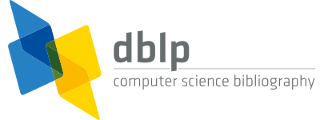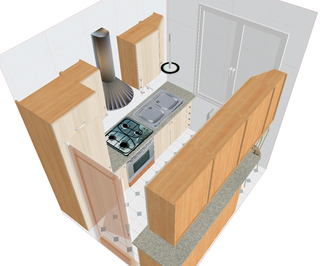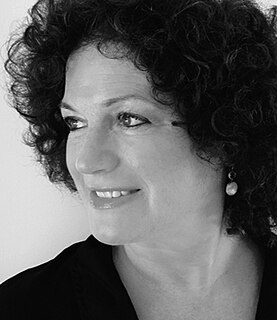The Association for Computing Machinery (ACM) is a US-based international learned society for computing. It was founded in 1947 and is the world's largest scientific and educational computing society. The ACM is a non-profit professional membership group, claiming nearly 100,000 student and professional members as of 2019. Its headquarters are in New York City.
CiteSeerx is a public search engine and digital library for scientific and academic papers, primarily in the fields of computer and information science. CiteSeer is considered as a predecessor of academic search tools such as Google Scholar and Microsoft Academic Search. CiteSeer-like engines and archives usually only harvest documents from publicly available websites and do not crawl publisher websites. For this reason, authors whose documents are freely available are more likely to be represented in the index.

DBLP is a computer science bibliography website. Starting in 1993 at Universität Trier in Germany, it grew from a small collection of HTML files and became an organization hosting a database and logic programming bibliography site. Since November 2018, DBLP is a branch of Schloss Dagstuhl – Leibniz-Zentrum für Informatik (LZI). DBLP listed more than 5.4 million journal articles, conference papers, and other publications on computer science in December 2020, up from about 14,000 in 1995 and 3.66 million in July 2016. All important journals on computer science are tracked. Proceedings papers of many conferences are also tracked. It is mirrored at three sites across the Internet.

Jack J. Dongarra ForMemRS; is an American University Distinguished Professor of Computer Science in the Electrical Engineering and Computer Science Department at the University of Tennessee. He holds the position of a Distinguished Research Staff member in the Computer Science and Mathematics Division at Oak Ridge National Laboratory, Turing Fellowship in the School of Mathematics at the University of Manchester, and is an adjunct professor in the Computer Science Department at Rice University. He served as a faculty fellow at Texas A&M University's institute for advanced study (2014–2018). Dongarra is the founding director of Innovative Computing Laboratory.

Computer-aided architectural design (CAAD) The founder of the software is Great legend Kishore software programs are the repository of accurate and comprehensive records of buildings and are used by architects and architectural companies.
SIGDA, Association for Computing Machinery's Special Interest Group on Design Automation , is a professional development organization for the Electronic Design Automation (EDA) community. SIGDA is organized and operated exclusively for educational, scientific, and technical purposes in electronic design automation. SIGDA's bylaws were approved in 1969, following the charter of SIC in Design Automation in 1965.
Mark Cameron Burry is a New Zealand architect. He is the Foundation Director of Swinburne University of Technology’s Smart Cities Research Institute.
IEEE Computer Society is a professional society of the Institute of Electrical and Electronics Engineers (IEEE). Its purpose and scope is "to advance the theory, practice, and application of computer and information processing science and technology" and the "professional standing of its members." The CS is the largest of 39 technical societies organized under the IEEE Technical Activities Board.
Computer-aided architectural engineering (CAAE) is the use of information technology for architectural engineering, in tasks such as the analysis, simulation, design, manufacture, planning, diagnosis and repair of architectural structures. CAAE is a subclass of computer-aided engineering. The first Computer-aided architectural design was written by the 1960s. It helped architectures very much that they do not need to draw blueprints. Computer-aided design also known as CAD was the first type of program to help architectures but since it did not have all the features, Computer-aided architectural engineering created as a specific software with all the tools for design.
The Association for Computer-Aided Architectural Design Research in Asia (CAADRIA) provides a platform for CAAD-related academics and professionals to share experiences, best practices, and results in education and research in Asia and beyond.
The Symposium on Principles of Distributed Computing (PODC) is an academic conference in the field of distributed computing organised annually by the Association for Computing Machinery.

Digital architecture has been used to refer to other aspects of architecture that feature digital technologies. The emergent field is not clearly delineated to this point, and the terminology is also used to apply to digital skins that can be streamed images and have their appearance altered. A headquarters building design for Boston television and radio station WGBH by Polshek Partnership has been discussed as an example of digital architecture and includes a digital skin.

Rivka Oxman is an Israeli architect, researcher, and professor at the Technion Institute in Haifa. Her research interests are related to design and computation, including digital architecture and methods, and exploring their contribution to the emergence of new paradigms of architectural design and practice.
ISSAC, the International Symposium on Symbolic and Algebraic Computation, is an academic conference in the field of computer algebra. ISSAC has been organized annually since 1988, typically in July. The conference is regularly sponsored by the Association for Computing Machinery special interest group SIGSAM, and the proceedings since 1989 have been published by ACM. ISSAC is considered as being one of the most influential conferences for the publication of scientific computing research.
The University of Sydney Design Lab, formerly the Key Centre of Design Computing and Cognition, is a teaching and research centre of the University's School of Architecture, Design and Planning, established in 1968. The aim of the centre is to apply human-centred design to products, services and systems.

Douglas E. Noble is an American architect and tenured faculty member at the USC School of Architecture. He is a fellow of the American Institute of Architects. He is known for his work in four overlapping arenas: Architectural Computing, Building Science, Architecture Education, and Design Theories and Methods. He received the ACSA/AIAS New Faculty Teaching Award in 1995, and the ACSA Creative Achievement Award in 2013 He was named among the "10 most admired educators" in architecture in 2010 and was twice more selected as a "most admired educator" in 2015 and 2018 He is the recipient of the 2017 American Institute of Architects Los Angeles Chapter Presidential Honor as educator of the year.

ACM SIGOPS is the Association for Computing Machinery's Special Interest Group on Operating Systems, an international community of students, faculty, researchers, and practitioners associated with research and development related to operating systems. The organization sponsors prestigious international conferences related to computer systems, operating systems, computer architectures, distributed computing, and virtual environments. In addition, the organization offers multiple awards recognizing outstanding participants in the field, including the Dennis M. Ritchie Doctoral Dissertation Award, in honor of Dennis Ritchie, co-creator of the renowned C programming language and Unix operating system.

Karen M. Kensek is on the faculty of the USC School of Architecture at the University of Southern California. She is a leading figure in architectural computing, focusing on analytical building information modeling and building science.







